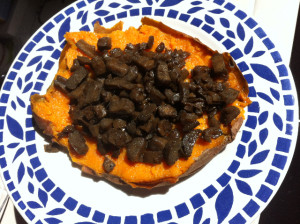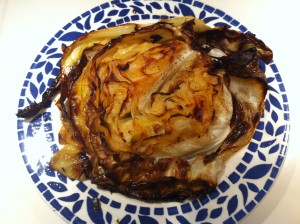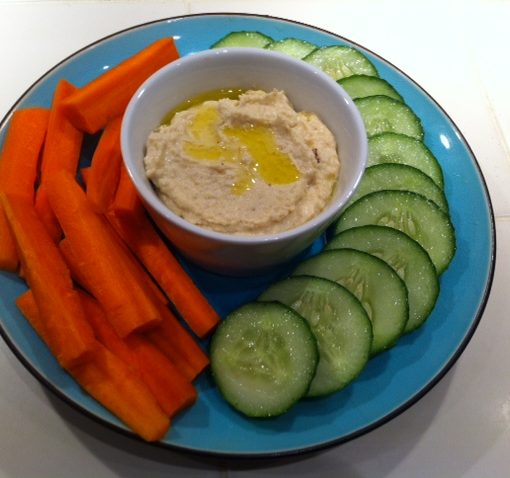
Following my previous post on the 5 elements, late summer, and supporting digestive health with seasonal nutrition, let’s finally get to the delicious part!
I love food. As medicine and for pure pleasure, I love growing it, cooking it, eating it, sharing it, and, well, everything but cleaning the dishes. I feel profoundly blessed to live in a region where we have access to the best quality of food on the planet.
Part of the beauty of Chinese medicine is that it’s a system that recognizes that even though multiple people might present with the same symptoms, that we don’t necessarily need the same treatment to heal and thrive. This system considers each person’s unique history, constitution, strengths, and imbalances in a given moment in order to dial in to the root cause beneath the symptoms. In that spirit, I have not found that any one diet is a is a perfect fit for everyone, as we are all so individual, ever-changing, and complex. Understanding how our bodies work and listening inwardly– this is a powerful combination that can guide us to discover what dietary choices make us feel good, function well, rest well, heal well, and have sustained energy. When we take the time to pay attention to how we feel after eating and to track our symptoms (moods, energy level, headaches, skin issues, compromised sleep, and the more obvious digestive symptoms like gas, bloating, constipation or loose stools), then we learn to recognize the feedback loops our bodies communicate through and to discover whether or not what we’re doing is working for us. Dietary experimenting with curiosity and attentiveness can catapult one’s health and one’s journey of self knowledge in simple and profound ways.
In Chinese nutrition and herbology, there are 5 primary flavors or tastes, each having it’s own medicinal quality. Late summer is associated with the flavor of sweetness, which has the medicinal actions of harmonizing, supplementing, and moistening in your body. These particular qualities of natural sweetness support digestive repair and rebuilding your energy level, among other things. (We’re not talking about refined sugar here. Yam-sweet and carrot-sweet, not donut-sweet.)
For those in need of digestive support, there are some classic foods to support the spleen and stomach according to Chinese nutritional theory. Along with enjoying these foods, avoiding dairy is also recommended. Dairy produces an excess of dampness in the body, which taxes the spleen and compromises digestion.
This is not a comprehensive list by any stretch, rather it’s a good starting place from which you can explore and experiment your way to better health.
Recipe: Burdock Root & Yams
This is an ultra-nourishing and ultra-delicious seasonal root combo. A slice of salty-sweet heaven!
A bit about burdock: It’s a long taproot common in Japanese cuisine. Its Japanese name is “Gobo”. A root is usually about 2.5 feet long. It’s available in small pieces at my natural foods store for top dollar and also at my local asian market where it is sold as a whole root, inexpensive, abundant, and fresh. (If it is flimsy enough that you can bend it into a complete circle, it’s not so fresh.) When I buy burdock and bring it home, I break each root into a few smaller pieces and store it soaking in water in a container in the fridge until I’m ready to use it (left). Burdock is known to be a readily absorbable source of dietary fiber, to detoxify the blood, to stimulate growth of our healthy gut bacteria, and to supply antioxidants and long chain essential fatty acids. When I first fell in love with burdock I was a vegetarian (past tense) and I fondly called it “bacon for vegetarians” because of its intensely rich flavor and quality of chewiness.
Ingredients:
4 whole roots of burdock
1/4 cup toasted sesame oil
1/3 cup tamari or soy sauce
1/3 cup water
jewel yams– Use as many as you have people to feed but I’ll say 4 here. Similarly sized/shaped ones will cook in a similar amount of time.
Yams:
Preheat over to 375.
Place your yams– whole, skin-on– on a baking sheet (right) in the center of the oven.
Bake until yams are soft all the way through– approximately 1+ hours for thin/small yams.
While the yams bake, cook your burdock as described below.
I use a large cast iron skillet.
Burdock:
Rinse the burdock roots and chop off the ends.
Chop them up into approximately almond sized chunks. I use a food processor with a chopping attachment (right) for quick chopping.
Cover the bottom of your skillet in the 1/4 c. toasted sesame oil and bring to a medium+ heat.
Put the chopped burdock into the skillet and stir it so that all the pieces of root are all tossed and lightly covered in the oil.
After sauteing for a few minutes like that, add the water and cover. Let simmer for 15 minutes, stirring occasionally.
Add the 1/3 c. tamari or soy sauce and stir again until all the burdock is tossed and covered in it.
Bring down to medium heat and cover again. Simmer again for 15 minutes, occasionally uncovering to stir.
Remove the lid. There should still be juices in the bottom of the skillet.
Taste a piece. If it’s not flavorful enough, add another 1-2 T. of tamari or soy. If the flavor is good, add nothing.
Either way, continue to simmer and stir frequently while the juices cook down completely.
When the juices are gone, it should be ready. The burdock should be pleasantly chewable, not too woody.
Slice open a yam and add a heaping scoop of burdock on the top. Enjoy!
If your digestive system is in need of some added support, consider scheduling an appointment for acupuncture and herbal therapy to help reduce gut inflammation and strengthen your digestive fire.




